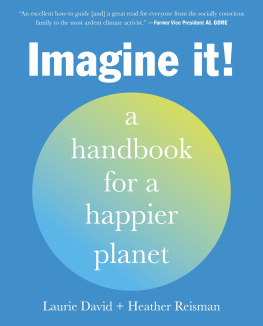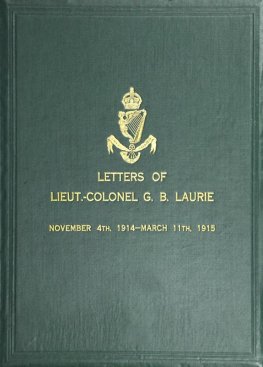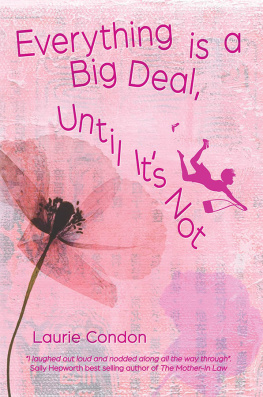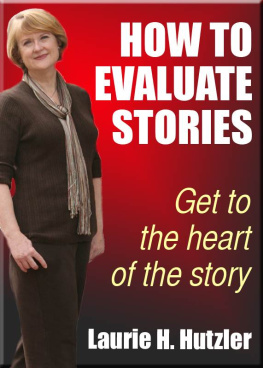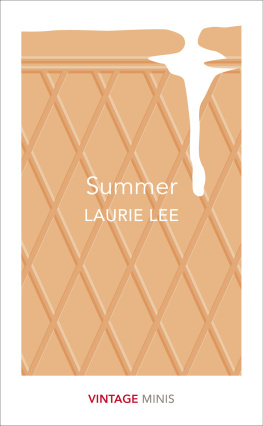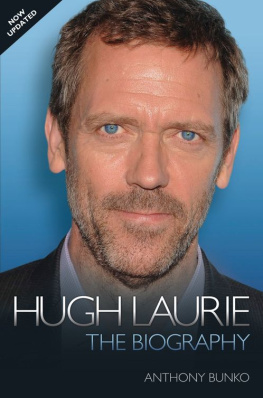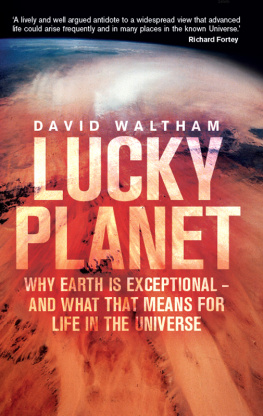Laurie David - Imagine It: A Handbook for a Happier Planet
Here you can read online Laurie David - Imagine It: A Handbook for a Happier Planet full text of the book (entire story) in english for free. Download pdf and epub, get meaning, cover and reviews about this ebook. year: 2021, publisher: Harmony/Rodale, genre: Children. Description of the work, (preface) as well as reviews are available. Best literature library LitArk.com created for fans of good reading and offers a wide selection of genres:
Romance novel
Science fiction
Adventure
Detective
Science
History
Home and family
Prose
Art
Politics
Computer
Non-fiction
Religion
Business
Children
Humor
Choose a favorite category and find really read worthwhile books. Enjoy immersion in the world of imagination, feel the emotions of the characters or learn something new for yourself, make an fascinating discovery.
- Book:Imagine It: A Handbook for a Happier Planet
- Author:
- Publisher:Harmony/Rodale
- Genre:
- Year:2021
- Rating:5 / 5
- Favourites:Add to favourites
- Your mark:
- 100
- 1
- 2
- 3
- 4
- 5
Imagine It: A Handbook for a Happier Planet: summary, description and annotation
We offer to read an annotation, description, summary or preface (depends on what the author of the book "Imagine It: A Handbook for a Happier Planet" wrote himself). If you haven't found the necessary information about the book — write in the comments, we will try to find it.
Laurie David: author's other books
Who wrote Imagine It: A Handbook for a Happier Planet? Find out the surname, the name of the author of the book and a list of all author's works by series.
Imagine It: A Handbook for a Happier Planet — read online for free the complete book (whole text) full work
Below is the text of the book, divided by pages. System saving the place of the last page read, allows you to conveniently read the book "Imagine It: A Handbook for a Happier Planet" online for free, without having to search again every time where you left off. Put a bookmark, and you can go to the page where you finished reading at any time.
Font size:
Interval:
Bookmark:
SPECIAL THANKS
We want to extend special thanks to the following people who have contributed so much and in different ways to helping bring this book to life:
To Gina McCarthy, former President of NRDC, for her leadership, constant guidance, and inspiration in all ways; and to her incredible staff of experts for their always gracious responses to our endless questions, including the wonderful Sarah Engler (who deserves double thanks!), Darby Hoover, Mae Wu, Jennifer Bernstein, Michelle Egan, Ella Tabasky, Daniel Hinerfeld, Steve Fleischli, Miriam Rotkin-Ellman, Jenny Shalant, Bora Chang, Stephanie Valeria, Jenny Powers, Christina Choi, Ann Lien, Elizabeth Bland, Erika Preuss, Kristen Walsh, and Susan Casey-Lefkowitz.
To Ken Cook and his passionate and deeply knowledgeable staff at the Environmental Working Group for their input and guidance.
To Thomas Homer-Dixon, Reese Halter, Dr. Harvey Karp, Bruce Mau, and Reverend Yearwood for their generous essays.
To Bruce Mau, Nathan Williams, Breanne Woods, and Alison Lee for their beautiful book design, and to Judith McKay for overseeing the production of the book with such care, Tracy Kyncl for organizing the image licensing, and to Navraj Sagoo for keeping track of every page and every change through so many iterations.
To Nina Montee, Cami Gordon, Romy David, Monina Von Opel, Amanda Gauthier, Angela Kohler, Chelsea Cox, Heather Babby, Ellen Babby, and Stephanie Soechtig, who read various versions and gave us great notes.
Finally, to our dear friend Louise Dennys, who made us believe we had a book in us and indulged us with her expert guidance every step along the way.
LD: With deep gratitude and very special thanks to my environmental mentors, including John Adams, Alan Horn, Frances Beinecke, and Vice President Al Gore. And to my husband, Robert Thorpemy best eco partner.
HMR: To David Suzuki for a lifetime of inspiration and Edward Burtynsky for further opening my eyes.
Example Draft Letter to be sent to a CEO
Your name
email or address
To: David S. Taylor, President and CEO of Procter & Gamble
Subject line: Stop flushing forests down the toilet
Dear Mr. Taylor,
As a consumer concerned about our environment, I was upset to learn that Charmin toilet paper is still being sourced from 100 percent virgin trees, many of them from Canadas beautiful boreal forest.
Not only does the Canadian boreal forest store vast amounts of carbon, its also home to hundreds of Indigenous communities and to the iconic boreal caribou.
It is unconscionable for majestic old-growth trees to be cut down to make a disposable product that could just as easily be made with recycled fiber.
People look to a brand as venerable as Procter & Gamble to leadto be an example of innovation toward protecting our planet. You have the power to change this destructive paradigm on a massive scale by reducing the overall use of virgin pulp content in your products.
Until you stop making products that are harmful to our ecosystem, I will be buying my toilet paper and other of your products from a more responsible brandand doing all I can to encourage others to do the same.
Thank you.
B Corps
Certified B Corporations are businesses that commit to consider the impact of decisions on workers, customers, suppliers, the community, and the environment. The Certified B Corporation designation is a legally binding designation that means the company must comply with all environmental safeguards. Examples of Certified B Corps: AllBirds, Stonyfield, Danone Yogurt, Patagonia, Eileen Fisher, Uncommon Goods, Bombas, Frank & Oak, BeautyCounter.
Behavioral contagion,
sometimes called social contagion A type of social influence; the tendency for a person to copy the behavior of others whom they have been exposed to and admire.
BPA (Bisphenol A)
An industrial chemical used to make certain plastics and resins that has been linked to cancer, obesity, and other health issues. It can be found in the lining of canned foods and drinks, plastic water bottles, and cash register receipts.
Carbon footprint
The amount of carbon dioxide emitted through the burning of fossil fuels as a result of the activities of a person or business.
Circular economy
An economic system aimed at eliminating waste and continually reusing resources.
Climate change
A change in climate patterns attributed largely to increased levels of carbon dioxide in the atmosphere due to the burning of fossil fuels. This term was coined during the George W. Bush administration to describe our climate crisis because it sounded less threatening than global warming. It was widely adopted thereafter.
Climate crisis
What were in right now. An umbrella term for global warming, the impacts of climate change, and their consequences.
Compost
Decayed organic material used as a plant fertilizer. Compost is rich in nutrients.
Cradle to cradle design
The term cradle to cradle was developed by Professor Michael Braungart and architect William McDonough and has since become a respected sustainability concept. Cradle to cradle is a designation that indicates there is no waste. The goal of this designation is to inspire a new industrial revolution that ensures production and manufacturing have a positive impact on society, the economy, and our planet.
Deforestation (clear-cutting)
The removal of a forest or stand of trees from land that is then converted to a non-forest use.
Eco-anxiety
Eco-anxiety or climate anxiety was described by the American Psychological Association in 2017 as a chronic fear of environmental doom.
Environmentalist
A person who acts with intention toward the environment and is concerned with and/or advocates for the protection of the environment.
Factory farm
A system of rearing livestock (poultry, pigs, cattle) indoors and in confined conditions.
Forest Stewardship Council (FSC)
Pioneers of forest certification, this council was set up by a voluntary group of businesses in response to the lack of an agreement to halt deforestation at the 1992 Earth Summit in Rio. The FSC promotes responsible, respectful management of the worlds forests.
Fossil fuel
A fuel (such as coal, oil, or natural gas) that was formed from the fossilized remains of prehistoric plant and animal life and which emits high levels of carbon dioxide when extracted and burned to provide energy.
FSC Certification
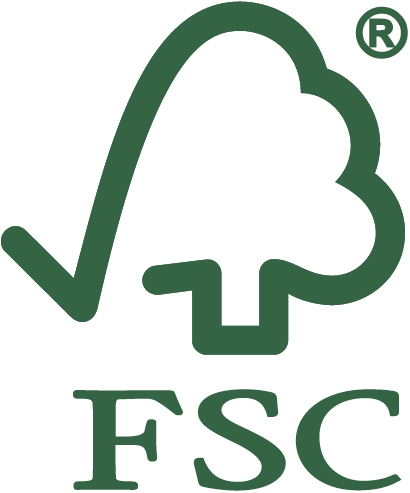
This certification ensures that products come from responsibly managed forests that provide environmental, social, and economic benefits. The FSC logo is a world standard and is applied to products made through sustainable practices.
Global warming
The ongoing rise of the average temperature of the Earths atmosphere, generally attributed to the greenhouse effect caused by increased levels of carbon dioxide and other pollutants.
Green living
The adoption of a sustainable lifestyle that is designed to protect the planet and its diverse inhabitants.
Green marketing
Communicating to a customer that a product or service is beneficial for both the environment and the user.
Greenhouse gas
A gas that absorbs radiation, traps heat in the atmosphere, and contributes to the greenhouse effect. According to climate scientists, our human activities are the primary cause of the increase in greenhouse gases over the last 150 years.
Font size:
Interval:
Bookmark:
Similar books «Imagine It: A Handbook for a Happier Planet»
Look at similar books to Imagine It: A Handbook for a Happier Planet. We have selected literature similar in name and meaning in the hope of providing readers with more options to find new, interesting, not yet read works.
Discussion, reviews of the book Imagine It: A Handbook for a Happier Planet and just readers' own opinions. Leave your comments, write what you think about the work, its meaning or the main characters. Specify what exactly you liked and what you didn't like, and why you think so.

